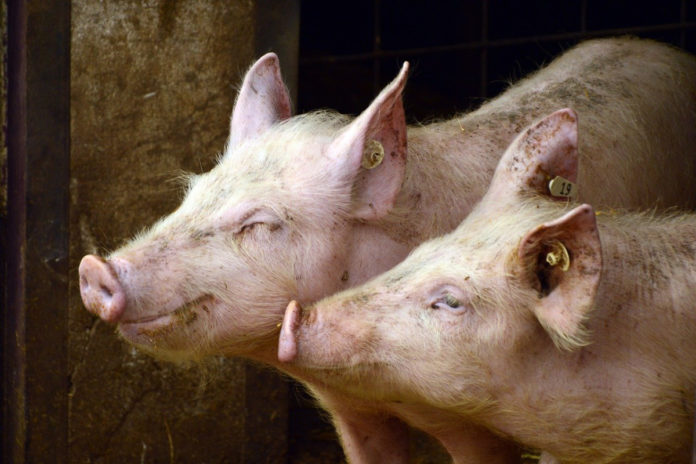Farmers across the nation have identified pig slurry as a cheaper alternative to chemical fertiliser this spring.
Farmers can use it as a mechanism to reduce chemical fertiliser expenses.
According to Horizon 2020, the EU produces more than 930 million cubic metres of pig slurry.
How much is it worth?
According to Teagasc, pig slurry is worth €48/1,000 gallons. From these figures, a 4,000-gallon load would have a nutrient value of double the normal value.
Hereafter, 1,000 gallons has the equivalent nutrient value to a 50kg bag of 19:7:20.
Nutrient value
According to the Fertilizer Association of Ireland, pig slurry has a relatively high N, P and K content compared to other organic fertilisers, such as cattle slurry, dung stead manure and farmyard manure.
| Nutrient | Cattle Slurry | Pig Slurry | Dung stead Manure | Farmyard Manure |
| N | 5.0 (45) | 4.3 (39) | 3.5 (7) | 4.5 (9) |
| P | 0.7 (6) | 1.4 (13) | 0.9 (2) | 1.2 (2) |
| K | 5.0 (45) | 2.2 (20) | 4.0 (8) | 6.0 (12) |
[Table source: Fertilizer Association of Ireland]
According to Teagasc research, pig slurry is a valuable source of nitrogen (N), as every 1,000 gallons contains approximately 19 units of N at 4% dry matter.
To maximise the recovery of N by the crop, it is essential that slurry is well agitated, applied in moist, cool conditions.
Research from Teagasc shows that the nutrient value of pig slurry is closely related to its solids content, which is influenced by the amount of water added to pig diets.
Application rates
Knowing the content of dry matter is one of the most important factors to applying slurry at the correct rate. The dry matter content of pig slurry can be easily determined on a farm by a slurry hydrometer.
For example, the application rate for slurry from the dry sow house is increased compared with slurry from the finisher house to ensure you apply the correct level of N, P and K.
According to Teagasc, between 2,000 and 3,000 gallons per acre is a good application for grazing.
However, it is important not to over-apply slurry. Grass regrowth rates may be reduced, especially if taller grass covers are present.
Slurry timing
If not correctly managed, slurry applications can be damaging to our environment. Some key practices will reduce the occurrence of environmental damages on your farm.
You should only apply when temperatures are above six degrees, as this is the required temperature for grass growth.
Bare fields or low grass cover provide an optimal environment for slurry application. This allows the slurry to penetrate the roots of the grass.
You can use a trailing shoe, dribble bar or injector system to reduce ammonia emissions, increase nitrogen value, reduce odours and grass contamination while allowing more flexibility regarding spreading time.
Advantages
Good manure management will result in reduced storage and transport costs for pig producers. This will also lead to an organic fertiliser with a higher nutritional value for farmers.
A vital advantage of pig slurry, particularly this year, is the value and nutritional status it can bring to your farm, in comparison to chemical fertilisers.
Teagasc research has shown that land obtaining slurry applications annually will release extra nitrogen over time. This offers a further saving in terms of reduced crop N requirements.
In addition, pig slurry contributes to the biological activity of the soil. The organic matter content improves soil quality and enables the retention of fertilising elements.
Factors to consider
You should consider the current nutrient status before applying pig slurry by conducting soil testing.
If you intend to utilise pig slurry on your farm, remember that you should reduce chemical fertiliser inputs.
Other factors you should consider include:
- Which area of the farm do you intend to spread pig slurry? Is the gradient suitable for the slurry application?
- The current stocking rate of the farm – will the projected grass growth meet demand?
- Which crops will you grow following slurry application – do they require this level of nutrient input?
- How much chemical fertiliser are you planning to use following the slurry application – are you creating a build-up of nutrients in the soil?
- The diet of the animals grazing the farm last year – did they have a high nutrition diet, adding to the nutrient value of the soil?
Sourcing pig slurry
In general, you can source pig slurry from a local pig farmer.
The cost of obtaining this valuable liquid fertiliser on your farm varies, depending on transportation fees, storage availability, etc.
Cavan, Cork and Tipperary are the pig populated counties. A big challenge for these farmers is the distance to suitable land for slurry spreading.
The quantity of pig slurry will fluctuate, depending on your farm circumstances, such as stocking rate.





